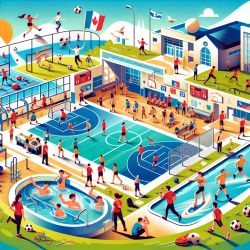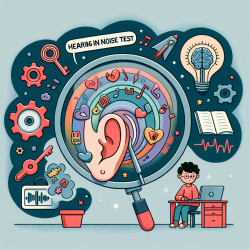Introduction
As professionals committed to enhancing children's health outcomes, we recognize the importance of leisure time physical activity (LTPA) in combating the obesity epidemic. The study "Individual and School Correlates of Adolescent Leisure Time Physical Activity in Quebec, Canada" provides valuable insights into how school environments influence adolescent physical activity levels. This blog will explore the study's findings and offer practical recommendations for practitioners.
Key Findings
The study highlights several critical findings:
- Boys reported higher levels of LTPA than girls, with 21% of boys being highly active compared to 16% of girls.
- The presence of parks and green spaces within 750 meters of schools was positively associated with higher LTPA levels for both genders.
- Contextual variables explained a higher variance in LTPA among girls (7.8%) compared to boys (2.8%).
Implications for Practitioners
These findings suggest several actionable strategies for practitioners:
- Promote Green Spaces: Encourage local governments and schools to increase the number of parks and green spaces near schools to boost physical activity levels among students.
- Focus on Gender-Specific Interventions: Develop targeted programs that address the specific needs and barriers faced by girls in engaging in physical activity.
- Leverage Socioeconomic Insights: Consider the socioeconomic context of schools when designing interventions, as private schools and those with higher socioeconomic status reported higher LTPA levels.
Encouraging Further Research
While the study provides valuable insights, it also highlights the need for further research. Practitioners are encouraged to explore:
- The impact of home environments on LTPA levels, as this study focused primarily on school environments.
- Longitudinal studies to better understand the causal relationships between environmental factors and physical activity.
- The role of psychosocial factors, such as self-efficacy, in influencing adolescent physical activity.
Conclusion
Improving adolescent physical activity requires a multifaceted approach that considers both individual and environmental factors. By implementing strategies informed by data, practitioners can make significant strides in promoting healthier lifestyles among adolescents. To delve deeper into the research, please read the original study: Individual and School Correlates of Adolescent Leisure Time Physical Activity in Quebec, Canada.










